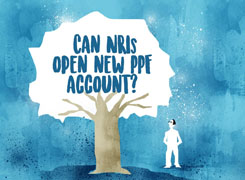Ramalingam Kalirajan |10908 Answers |Ask -Follow
Mutual Funds, Financial Planning Expert - Answered on Jul 10, 2025
He has an MBA in finance from the University of Madras and is a certified financial planner.
He is the director and chief financial planner at Holistic Investment, a Chennai-based firm that offers financial planning and wealth management advice.... more

Dear Sir, I am an NRI and am 55 years old. I have a saving in form of FD's, properties, share & MF's to the tune of 8 crores. I would like to know the best investment option available for me as an NRI?
Let us now assess the best investment options for an NRI like you.
Your Current Life Stage: Transitioning to Retirement
At 55, you are possibly in your peak income years or already planning for retirement. Your priority now should be:
– Creating regular income
– Minimising tax outflow
– Keeping inflation under control
– Avoiding capital erosion
– Providing for family and health needs
This life stage needs a customised investment mix that works under a 360-degree framework.
Step 1: Classify Your Financial Goals
Start by separating your financial goals:
– Monthly income needs (post-retirement lifestyle)
– Emergency medical fund (Rs. 15–20 lakhs at minimum)
– Support for spouse or dependent family
– Legacy and estate planning
– Optional: travel or hobbies-based fund
Each goal should have its own investment strategy and risk level.
Step 2: Create a Three-Bucket Investment Strategy
You need to break your portfolio into three parts:
# Short-Term Bucket (0–3 years)
– Keep 1 to 2 years of income needs here.
– Include liquid funds, ultra-short duration debt mutual funds, or bank FDs.
– Do not keep more than 25% of your corpus here.
– Return is not the focus here. Capital safety and liquidity is.
# Medium-Term Bucket (3–7 years)
– Include aggressive hybrid funds and balanced advantage funds.
– Choose regular plans through a Mutual Fund Distributor who is a Certified Financial Planner.
– These funds provide decent growth and some downside protection.
– Rebalance this bucket every 12–18 months.
# Long-Term Bucket (More than 7 years)
– Include diversified equity mutual funds and international exposure through regulated MF houses.
– Choose actively managed funds, not index funds.
– This segment will beat inflation and build wealth.
– Keep 40–50% of your total corpus here, depending on risk comfort.
Step 3: Avoid Index Funds – Here’s Why
You may hear that index funds are low-cost. But cost is not the only thing that matters.
– Index funds have no active human decision-making.
– They follow the market blindly – both up and down.
– In falling markets, index funds cannot protect your capital.
– Actively managed funds adjust to market cycles better.
– Good fund managers know when to reduce equity and when to switch to debt.
So, prefer actively managed funds under the guidance of a Certified Financial Planner.
Step 4: Never Choose Direct Mutual Funds – Here’s Why
Many NRIs feel direct plans have lower cost. But this lower cost comes with hidden problems.
– You don’t get personalised service in direct funds.
– You won’t have anyone to help you with fund rebalancing.
– Tax-efficient withdrawal becomes complex if unmanaged.
– Switching between funds can lead to wrong choices.
Investing through a CFP-certified Mutual Fund Distributor ensures:
– Correct asset allocation
– Timely rebalancing
– Goal mapping and monitoring
– Tax planning
– Behavioural guidance during market volatility
Regular plans, although slightly higher in cost, give you expert handholding and avoid costly mistakes.
Step 5: Ideal Mutual Fund Allocation Strategy
For an NRI like you, mutual funds offer flexibility, diversification, and tax benefits.
Consider a mix of the following categories:
– Flexi cap funds for long-term growth
– Large and mid-cap funds for stability and return
– Aggressive hybrid funds for medium-term needs
– Dynamic asset allocation funds for rebalancing ease
– International funds for USD-based diversification (select AMCs allow NRI investment)
Invest using the Systematic Withdrawal Plan (SWP) once you start needing regular income.
– This gives monthly cash flow
– You only pay capital gains tax on the withdrawn amount
– Equity SWP is tax-efficient in the long term
Step 6: Optimise Your FD Exposure
Many NRIs prefer FDs because they feel safe. But these have major downsides:
– Interest is taxable
– Low returns post inflation
– Premature withdrawal reduces interest
– No equity-linked growth potential
Keep only 10–15% of your corpus in FDs. Only for:
– Emergency fund
– Known expense in 1–2 years
– Safety corpus for elderly spouse
Look at debt mutual funds or low-duration hybrid funds as an alternative.
Step 7: Review Your Insurance Exposure
If you hold traditional insurance policies like:
– LIC endowment plans
– ULIPs
– Investment-cum-insurance schemes
Then these may be underperforming. Please check IRR on them. If below 6–7%, surrendering them may be the better choice.
Reinvest the surrender value into mutual funds as per goal needs. Term insurance is enough for life cover.
Step 8: Taxation Awareness for NRIs
Tax planning is very important. NRIs need to keep this in mind:
– LTCG on equity mutual funds above Rs. 1.25 lakh is taxed at 12.5%
– STCG on equity mutual funds is taxed at 20%
– Debt mutual funds are taxed as per your slab
– NRE FDs are tax-free but repatriation rules apply
– Be aware of Double Tax Avoidance Agreement (DTAA) rules of your resident country
Work with a tax consultant in India and abroad to ensure clean filing.
Step 9: Estate Planning for NRIs
Being an NRI, you must create a Will in India and your country of residence. Key steps:
– Prepare a clear nomination and Will for your Indian assets
– Appoint a Power of Attorney if needed
– Keep your financial records and MF folios up to date
– Use joint holding in MF investments wherever possible
– Avoid complexity in legal documentation
A CFP can help align your estate wishes with financial instruments.
Step 10: Avoid Real Estate for Future Investments
You already own property. No need to increase exposure here.
– Real estate is illiquid
– Rental income is low post-tax
– Capital gains may not beat inflation
– Regulatory and legal issues exist
– Difficult to manage property from abroad
Instead, channel new investments into flexible instruments like mutual funds or sovereign bonds.
Step 11: Use of SWP Instead of Annuity
You may think of annuity plans for monthly income. But they have major drawbacks:
– Irreversible
– Poor returns
– Capital is locked
– Taxed fully as income
Use mutual funds with SWP option for monthly income. It is:
– Flexible
– Tax-efficient
– Capital remains with you
– You can change withdrawal amount anytime
Step 12: Investment Platform for NRIs
Choose SEBI-registered mutual fund platforms that support NRI KYC and documentation. Ensure:
– Your bank is NRE/NRO compliant
– Your demat (if needed) is NRI-type
– FATCA declaration is submitted
– Avoid platforms that do not provide human support
Do not invest through relatives or proxy accounts. It can lead to compliance issues later.
Step 13: Review Your Portfolio Twice a Year
As an NRI, it’s easy to lose track of Indian investments. Create a review system.
– Use a single dashboard to track MFs, FDs, shares
– Hire a CFP to review asset allocation
– Rebalance every 6–12 months
– Exit poor-performing schemes early
– Align portfolio with risk and goals regularly
Stay informed but avoid reacting emotionally to market ups and downs.
Step 14: Don't Ignore Currency Risks
As an NRI, your retirement may be abroad or in India. Currency fluctuation matters.
– If planning to return to India, Indian assets are good enough
– If staying abroad, include international mutual funds in USD
– Avoid too much repatriation unless needed
– Keep one leg in both currencies through dual strategy
This protects you from rupee depreciation or sudden currency volatility.
Finally
At 55, your portfolio must move from “growing” to “guarding and generating”. You already have built the foundation. Now you need a structured, expert-driven plan.
Keep your investments simple, diversified, and regularly monitored.
Avoid high-cost, inflexible products. Stay away from real estate and annuity locks.
Choose professionally managed mutual funds over index funds and direct investing. Let an experienced Certified Financial Planner guide your journey.
You deserve both peace of mind and wealth growth.
Best Regards,
K. Ramalingam, MBA, CFP,
Chief Financial Planner,
www.holisticinvestment.in
https://www.youtube.com/@HolisticInvestment
You may like to see similar questions and answers below
Ramalingam Kalirajan |10908 Answers |Ask -Follow
Mutual Funds, Financial Planning Expert - Answered on Apr 30, 2024
Ramalingam Kalirajan |10908 Answers |Ask -Follow
Mutual Funds, Financial Planning Expert - Answered on Jul 19, 2024
Ramalingam Kalirajan |10908 Answers |Ask -Follow
Mutual Funds, Financial Planning Expert - Answered on Jul 02, 2024
Ramalingam Kalirajan |10908 Answers |Ask -Follow
Mutual Funds, Financial Planning Expert - Answered on Jul 10, 2024
Ramalingam Kalirajan |10908 Answers |Ask -Follow
Mutual Funds, Financial Planning Expert - Answered on Jul 12, 2024
Ramalingam Kalirajan |10908 Answers |Ask -Follow
Mutual Funds, Financial Planning Expert - Answered on Dec 20, 2025
Ramalingam Kalirajan |10908 Answers |Ask -Follow
Mutual Funds, Financial Planning Expert - Answered on Dec 20, 2025
Naveenn Kummar |237 Answers |Ask -Follow
Financial Planner, MF, Insurance Expert - Answered on Dec 20, 2025
Ramalingam Kalirajan |10908 Answers |Ask -Follow
Mutual Funds, Financial Planning Expert - Answered on Dec 19, 2025
Nayagam P P |10859 Answers |Ask -Follow
Career Counsellor - Answered on Dec 19, 2025
Ramalingam Kalirajan |10908 Answers |Ask -Follow
Mutual Funds, Financial Planning Expert - Answered on Dec 19, 2025
Ramalingam Kalirajan |10908 Answers |Ask -Follow
Mutual Funds, Financial Planning Expert - Answered on Dec 19, 2025
Ramalingam Kalirajan |10908 Answers |Ask -Follow
Mutual Funds, Financial Planning Expert - Answered on Dec 19, 2025
Radheshyam Zanwar |6751 Answers |Ask -Follow
MHT-CET, IIT-JEE, NEET-UG Expert - Answered on Dec 19, 2025
Radheshyam Zanwar |6751 Answers |Ask -Follow
MHT-CET, IIT-JEE, NEET-UG Expert - Answered on Dec 19, 2025























